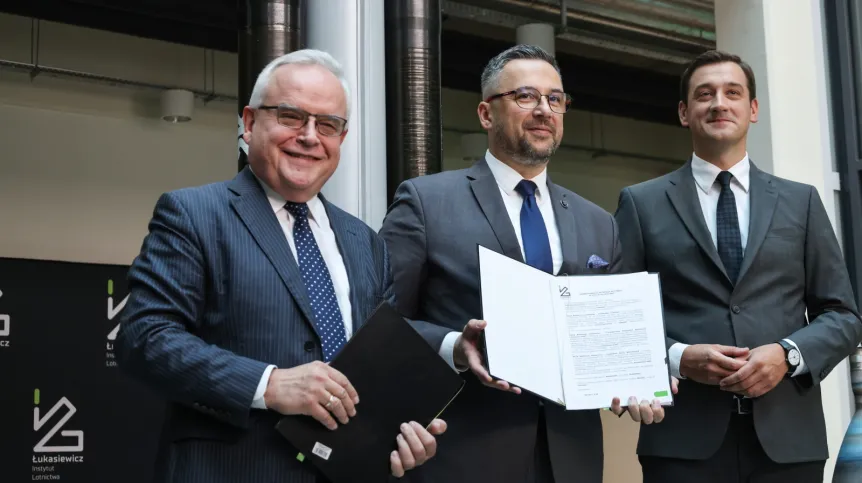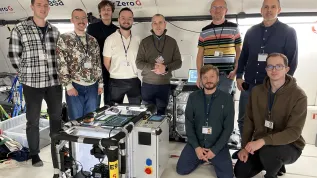
Poland’s Łukasiewicz Research Network has launched the SPARK project, which will develop a Polish research satellite to test domestic technologies in space.
The orbiter, worth nearly PLN 15 million, is scheduled for launch in 2027, network president Hubert Cichocki announced last week.
Inaugural documents were signed by Cichocki and Cezary Szczepański, director of the Łukasiewicz Institute of Aviation.
During the press conference, Cichocki said the SPARK satellite—Spacecraft Platform Architecture for Research and Key-enabling missions—will enable research and testing of technologies developed in Poland.
The venture brings together three institutes of the Łukasiewicz network: the Institute of Aviation, the Institute of Non-Ferrous Metals, and the Industrial Institute of Automation and Measurements. The network will allocate PLN 14.6 million from its own funds, savings achieved in recent years on administrative costs, Cichocki said.
Szczepański said that SPARK fits into the network’s long-term strategy. “From the perspective of Polish security, development, technology, and revenues (...), it is crucial that we have competence and be decision-makers in this area. The goal of this project is to embark on this path of development,” he said.
Cichocki added that the network’s capabilities make it a potential leader in the Polish space sector. “The Łukasiewicz Research Network has the potential to become a driving force for the Polish space sector thanks to the competencies built in the network's institutes, just like here at the Institute of Aviation, the leader of our consortium in this project,” he said.
SPARK will be equipped with a modular onboard computer based on experience from the OBC-K1 system, developed for the ILR-33 Amber 2K suborbital rocket.
In 2024 that rocket reached 101 kilometers, crossing the Kármán Line, the conventional boundary of space. Design and testing of the satellite will take 30 months, with launch planned for the third quarter of 2027.
Science Minister Marcin Kulasek said the project is also crucial for academic development. “It is also a signal to Polish researchers, doctoral candidates, engineers, and students: you no longer have to travel to create the future. You can do it here, in Poland, at a world-class level. I believe that this platform will inspire a new generation to believe that space technologies are not a distant vision, but a real, accessible reality,” he said.
Kulasek described SPARK as “a bold response to global research, technological, and economic challenges.” He added: “After sending Polish astronaut Sławosz Uznański-Wiśniewski into orbit, it is further proof that we are rapidly entering the elite group of countries aiming higher. Literally and figuratively.”
The Institute of Aviation is also building a space laboratory to support research. “In the near future, we want our satellites to enable Polish universities, institutes, and companies to conduct experiments in microgravity. This will enable the implementation of processes that would be impossible or very expensive on Earth,” Szczepański said.
Project manager Przemysław Sitnik, head of the Aerospace Electronics Section at the Institute of Aviation, said the goal is to establish Poland as a satellite producer. “Thanks to the SPARK project, we will strive to join the international ranks in satellite production,” he said.
SPARK will be a 3U CubeSat, a modular satellite measuring 10 by 10 by 30 centimeters. The compact platform, inexpensive to manufacture and launch, will enable scientific missions and the testing of avionics, power systems, onboard computers and communication technologies.
The Łukasiewicz Research Network, established under the government’s Strategy for Responsible Development, brings together 22 institutes in 12 cities, coordinated by the Łukasiewicz Centre. (PAP)
abu/ zan/













